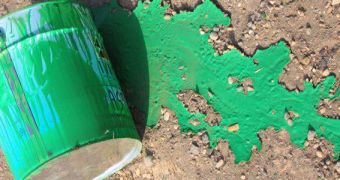Geoengineering is a field of science that deals with modifying the planetary climate through artificial methods and chemicals, so that temperatures decrease. A team of scientists recently proposed using a chemical from sunscreens and paints to achieve this objective.
There are several directions towards which geoengineering can work. Some approaches deal with reducing the amount of carbon dioxide in the atmosphere by promoting the growth of phytoplankton, while others propose reflecting as much sunlight as possible back into space.
The newly proposed method belongs to the latter category. It involves using titanium dioxide, a light-scattering nanoparticle usually found in paints, inks and sunscreens, to modify the atmosphere so that it becomes significantly more reflective to sunlight.
“While it's essential that we work to reduce carbon dioxide emissions now, it would be wise to have a well-researched emergency system in reserve as a Plan B,” UK Royal Academy of Engineering member, Peter Davidson, says, as quoted by Innovation News Daily.

 14 DAY TRIAL //
14 DAY TRIAL //